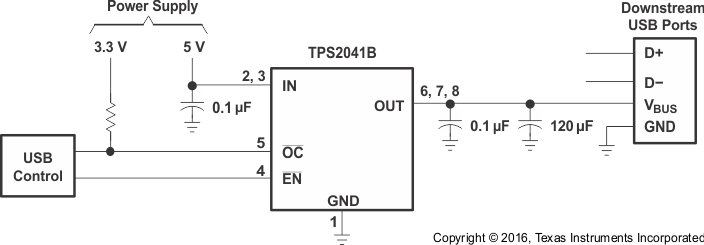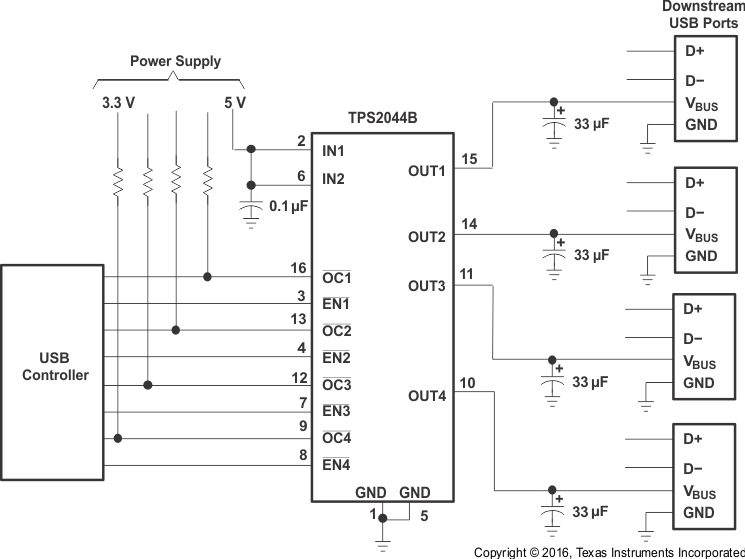SLVS514P April 2004 – August 2024 TPS2041B , TPS2042B , TPS2043B , TPS2044B , TPS2051B , TPS2052B , TPS2053B , TPS2054B
PRODUCTION DATA
- 1
- 1 Features
- 2 Applications
- 3 Description
- 4 General Switch Catalog
- 5 Pin Configuration and Functions
- 6 Specifications
- 7 Parameter Measurement Information
- 8 Detailed Description
- 9 Application and Implementation
- 10Power Supply Recommendations
- 11Layout
- 12Device and Documentation Support
- 13Revision History
- 14Mechanical, Packaging, and Orderable Information
Package Options
Mechanical Data (Package|Pins)
Thermal pad, mechanical data (Package|Pins)
- DGN|8
Orderable Information
9.2.2 Host and Self-Powered and Bus-Powered Hubs
Hosts and self-powered hubs have a local power supply that powers the embedded functions and the downstream ports (see Figure 9-11 and Figure 9-12). This power supply must provide from 5.25 V to 4.75 V to the board side of the downstream connection under full-load and no-load conditions. Hosts and SPHs are required to have current-limit protection and must report overcurrent conditions to the USB controller. Typical SPHs are desktop PCs, monitors, printers, and stand-alone hubs.
 Figure 9-11 Typical One-Port USB Host and Self-Powered Hub
Figure 9-11 Typical One-Port USB Host and Self-Powered Hub Figure 9-12 Typical Four-Port USB Host and Self-Powered Hub
Figure 9-12 Typical Four-Port USB Host and Self-Powered Hub